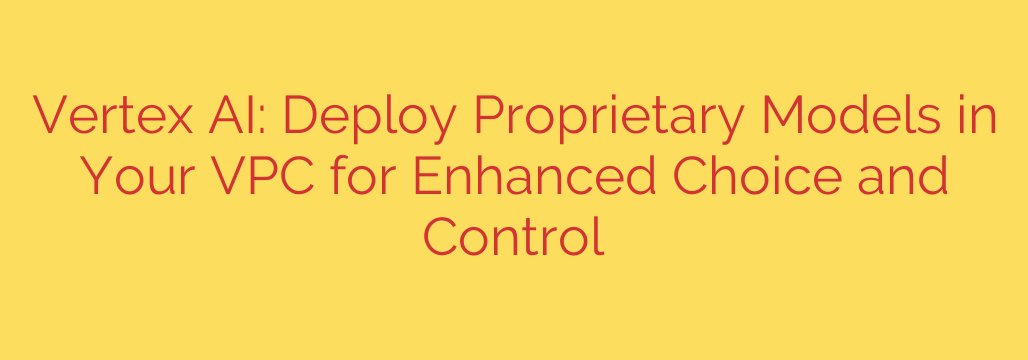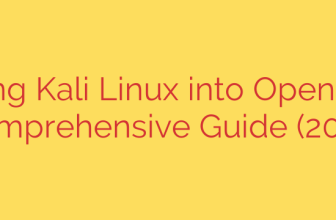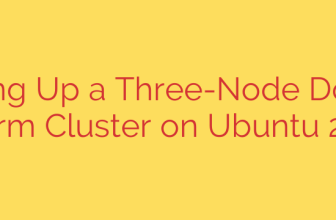
Enhance AI Security: A Guide to Deploying Models in Your VPC
As organizations race to integrate artificial intelligence into their core operations, a critical question emerges: Is our data safe? While powerful AI and machine learning models offer unprecedented capabilities, sending sensitive information over the public internet to a third-party endpoint creates significant security and compliance risks.
The solution lies in bringing the model inside your own secure environment. Deploying proprietary and third-party AI models within your Virtual Private Cloud (VPC) is no longer a luxury—it’s a modern security imperative. This approach allows you to harness the power of AI while maintaining complete control over your data.
The Problem with Public Endpoints
When you use an AI model hosted on a public endpoint, your data must travel across the open internet to be processed. This exposes it to numerous threats, including:
- Data Interception: Malicious actors can potentially intercept data in transit.
- Increased Attack Surface: Every public endpoint is another potential vector for attack.
- Compliance Violations: Many regulatory frameworks, like GDPR and HIPAA, have strict rules about where and how sensitive data can be processed. Sending it over the public internet can lead to costly violations.
For any organization dealing with customer data, financial records, or proprietary information, these risks are simply too high.
The Solution: Private Endpoints in Your VPC
By leveraging a platform like Vertex AI, you can now deploy powerful machine learning models on private endpoints directly within your organization’s VPC. This architecture fundamentally changes the security dynamic.
Instead of your data leaving your network, the model’s inference endpoint resides within your secure, isolated cloud environment. All communication between your applications and the AI model happens over your private network. This means your sensitive data never touches the public internet.
Core Benefits of VPC Deployment for AI
Moving your models into a private network environment delivers immediate and substantial advantages for security, compliance, and operational control.
1. Unmatched Data Security and Privacy
This is the most critical benefit. By ensuring all inference requests and responses stay within your VPC, you drastically reduce the risk of data exfiltration and unauthorized access. Your data remains within your trusted network perimeter at all times, protected by your existing security controls, firewalls, and monitoring systems.
2. Streamlined Regulatory Compliance
For industries like healthcare, finance, and government, data sovereignty and privacy are non-negotiable. Deploying AI models within a VPC helps you meet stringent compliance requirements by providing a fully auditable and controlled environment. You can confidently demonstrate to auditors that sensitive data is not being exposed externally.
3. Total Network Control and Governance
With a private endpoint, you gain granular control over your AI infrastructure. You can define specific network routes, firewall rules, and access policies to manage exactly which applications and services can interact with the model. This is a core tenet of a Zero Trust security architecture, where nothing is trusted by default.
4. Flexibility and Choice of Models
This secure deployment model isn’t limited to a specific type of AI. You can apply this same protected architecture to a wide range of models, including:
- Proprietary models you’ve trained in-house.
- Fine-tuned open-source models like Llama or Falcon.
- Powerful foundation models from leading providers.
This flexibility allows you to choose the best tool for the job without ever compromising on your security posture.
Actionable Steps for a Secure AI Deployment
Simply moving a model into a VPC is the first step. To build a truly robust and secure AI ecosystem, consider these best practices:
- Leverage Identity and Access Management (IAM): Implement the principle of least privilege. Grant only the necessary permissions to the service accounts and users that need to access the model endpoint. Avoid using overly broad permissions.
- Utilize VPC Service Controls: Create an additional layer of defense by establishing a service perimeter around your projects. This helps prevent data exfiltration by restricting data movement even within your cloud environment, ensuring data from your AI project can’t be accidentally sent to an unauthorized service.
- Enable Comprehensive Logging and Monitoring: Continuously monitor access logs and network traffic to and from your private endpoint. Set up alerts for suspicious activity to enable rapid threat detection and response.
- Encrypt Data at Rest and in Transit: While a VPC protects data from the public internet, you should still enforce encryption everywhere. Ensure that all data stored in connection with your model is encrypted at rest and that all internal traffic uses TLS encryption.
The Future of Enterprise AI is Private and Secure
Moving your AI models from public endpoints to a private VPC isn’t just a technical upgrade; it’s a fundamental shift in security posture. It transforms AI from a potential liability into a secure, compliant, and deeply integrated part of your enterprise architecture. By taking control of your network environment, you can innovate confidently, knowing your most valuable data is protected.
Source: https://cloud.google.com/blog/products/ai-machine-learning/new-proprietary-models-vertex-model-garden/








